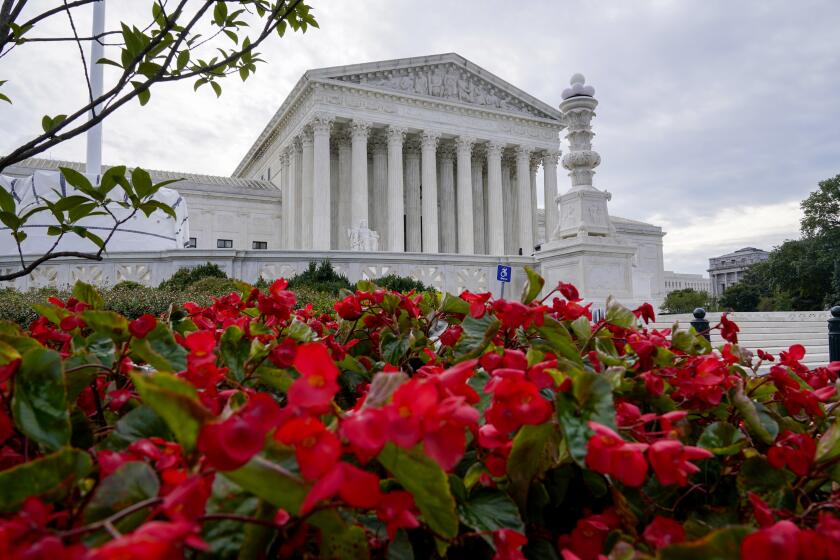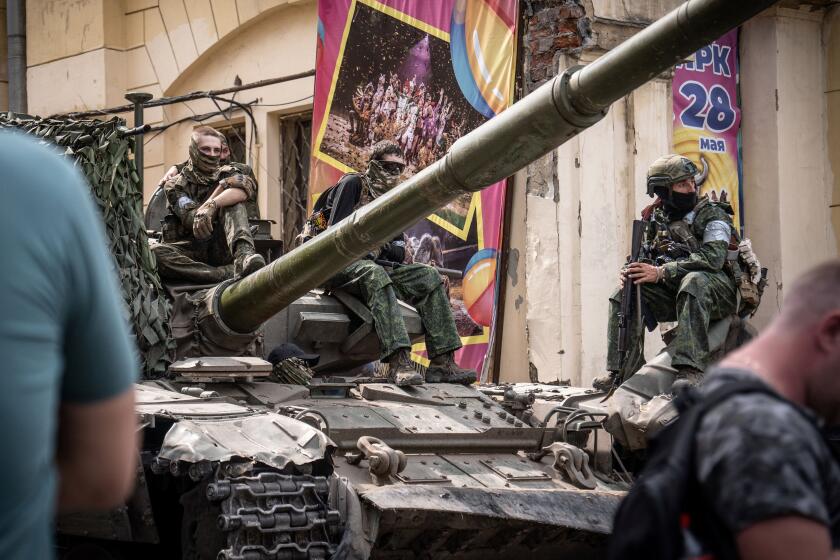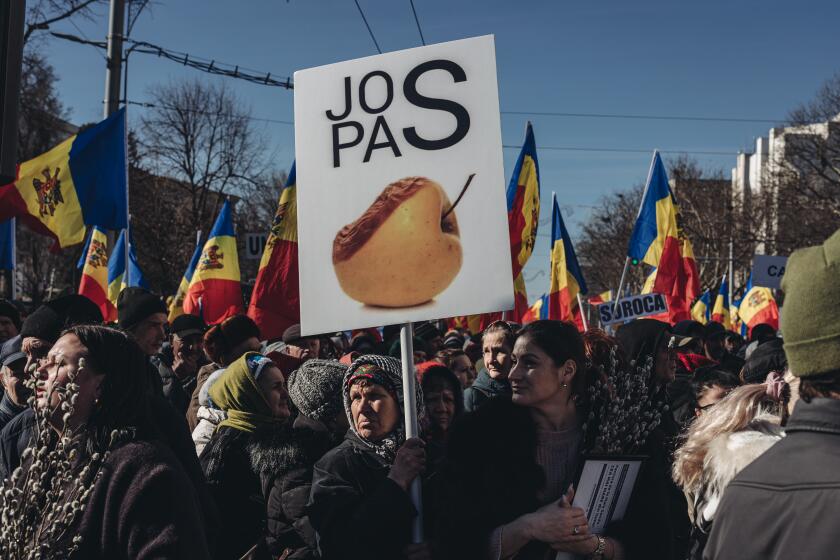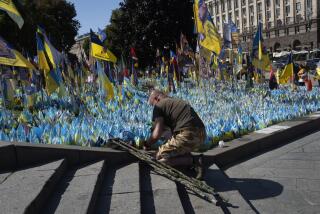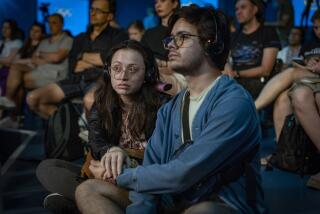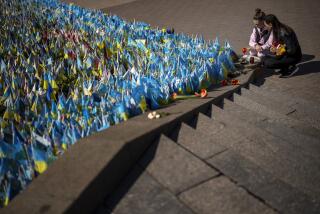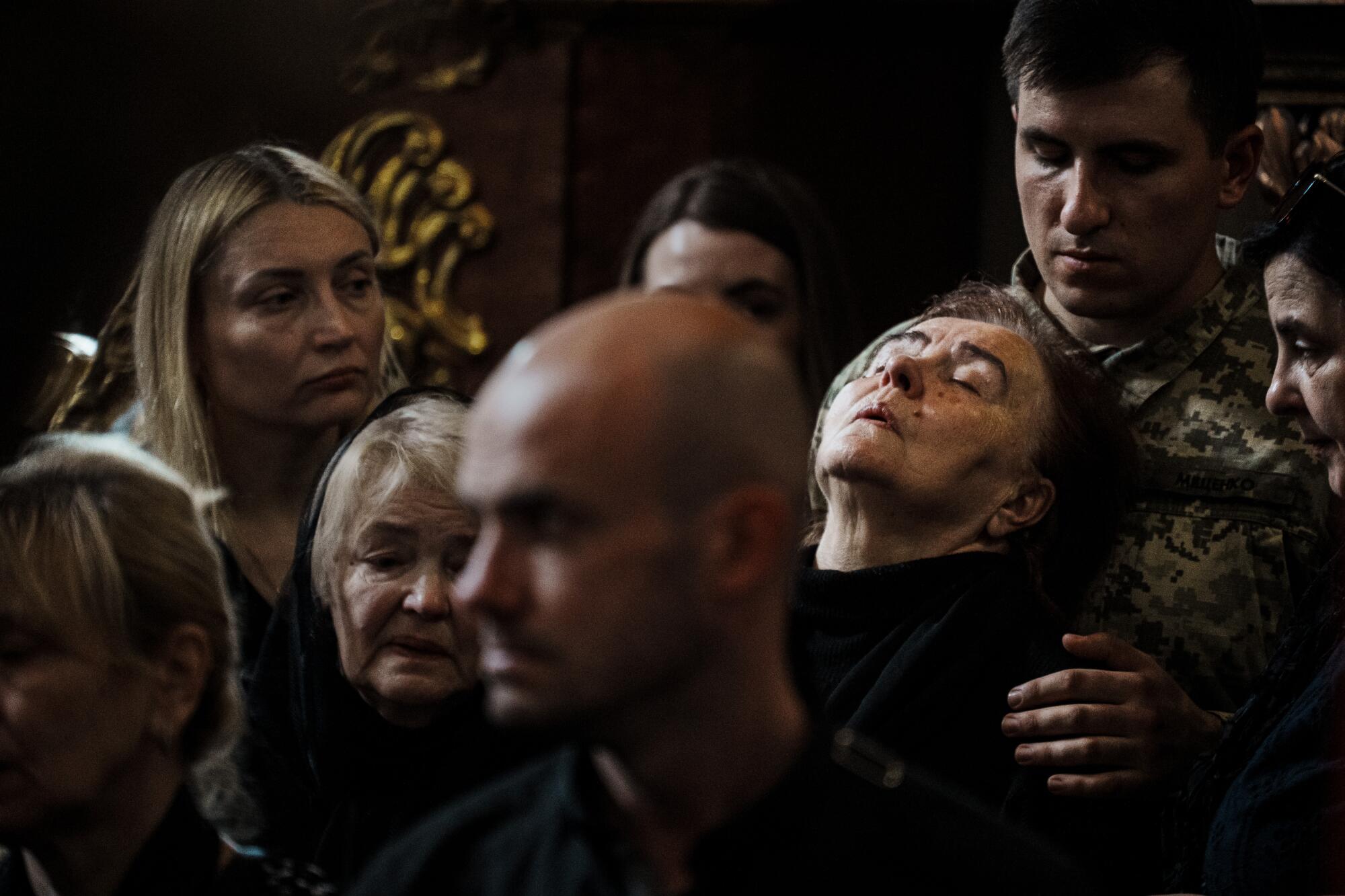
LVIV, Ukraine — One day, there might be two. Then, perhaps — an increasing rarity — a day with none. And then, as on this hot, cloud-shrouded day, four.
Four caskets to be carried by pallbearers along a cobblestone street lined with silent mourners. Four names intoned in the echoing, dimly lighted recesses of a landmark church. Four fresh graves hewn from claylike soil in a historic cemetery where the newly dead are crowding out the old.
Ukraine’s ongoing counteroffensive against invading Russian troops, a bloody, slow-motion struggle that is exacting a heavy but undisclosed toll from both armies, began with little fanfare in early June. No one expects the fighting to end any time soon.
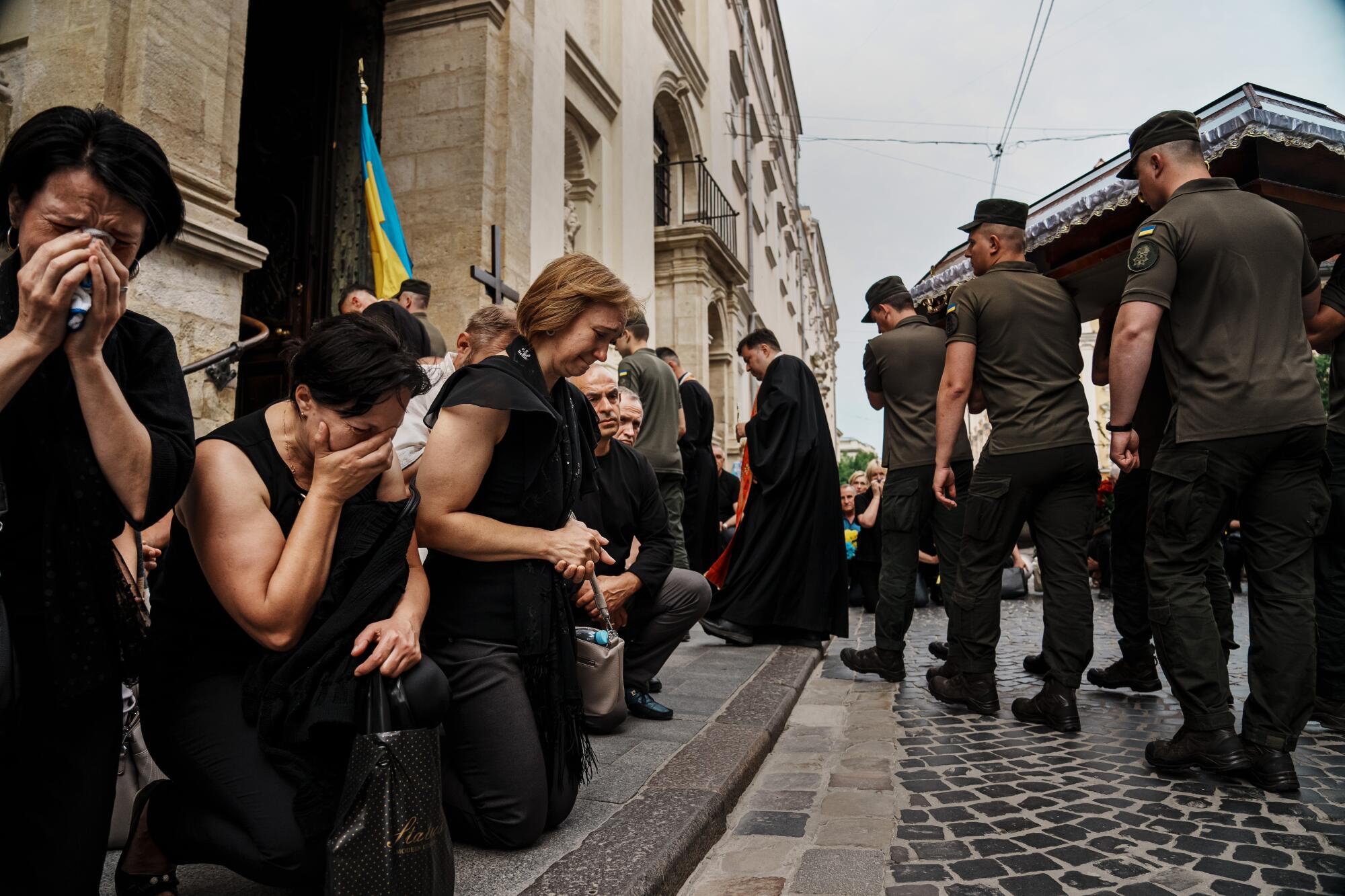
In cities, towns and villages across Ukraine, bleak homecomings for the dead are a ritual as old as war. The grief they inspire is like something alive, a wild and complex organism that confounds even those who know it well.
“So many, but of course it’s only a drop in the ocean,” said Lyubomyr Humenyuk, 59, who came to the main cemetery on the edge of the western city of Lviv to pay respects to his soldier neighbor, killed a week earlier in eastern Ukraine. His own brother, he said, was buried here too.
The Supreme Court rejects a free speech challenge to a long-standing law that makes it a crime to ‘encourage or induce’ illegal immigration.
If war is a kind of weather, these funerals are its barometer, measuring the weight of the air, gravity’s pressure. Nearly everyone here understands this as a fight for national existence, a battle from which there is no walking away.
“The challenge that we face is that the state of war is a constant,” said Father Nestor Kyzyk, a 29-year-old military chaplain at Saints Peter and Paul Garrison Church in Lviv, where most of the city’s war funerals are held. “You can’t see an end to it.”
::
Present-day Lviv is the largest city in western Ukraine, but it has changed hands over the centuries. A onetime outpost of the Austro-Hungarian empire, it later became part of neighboring Poland, then spent decades under Soviet dominion before Ukraine gained independence in 1991.
Lychakiv cemetery, the 18th century necropolis on the city’s outskirts, reflects that layering of history, filled with the dead of every era. The vast hilly complex, woven through with winding pathways, resembles a cross between Arlington National Cemetery and venerable burial grounds like Paris’ Pere Lachaise, with ornate tombs and fine-arts statuary.
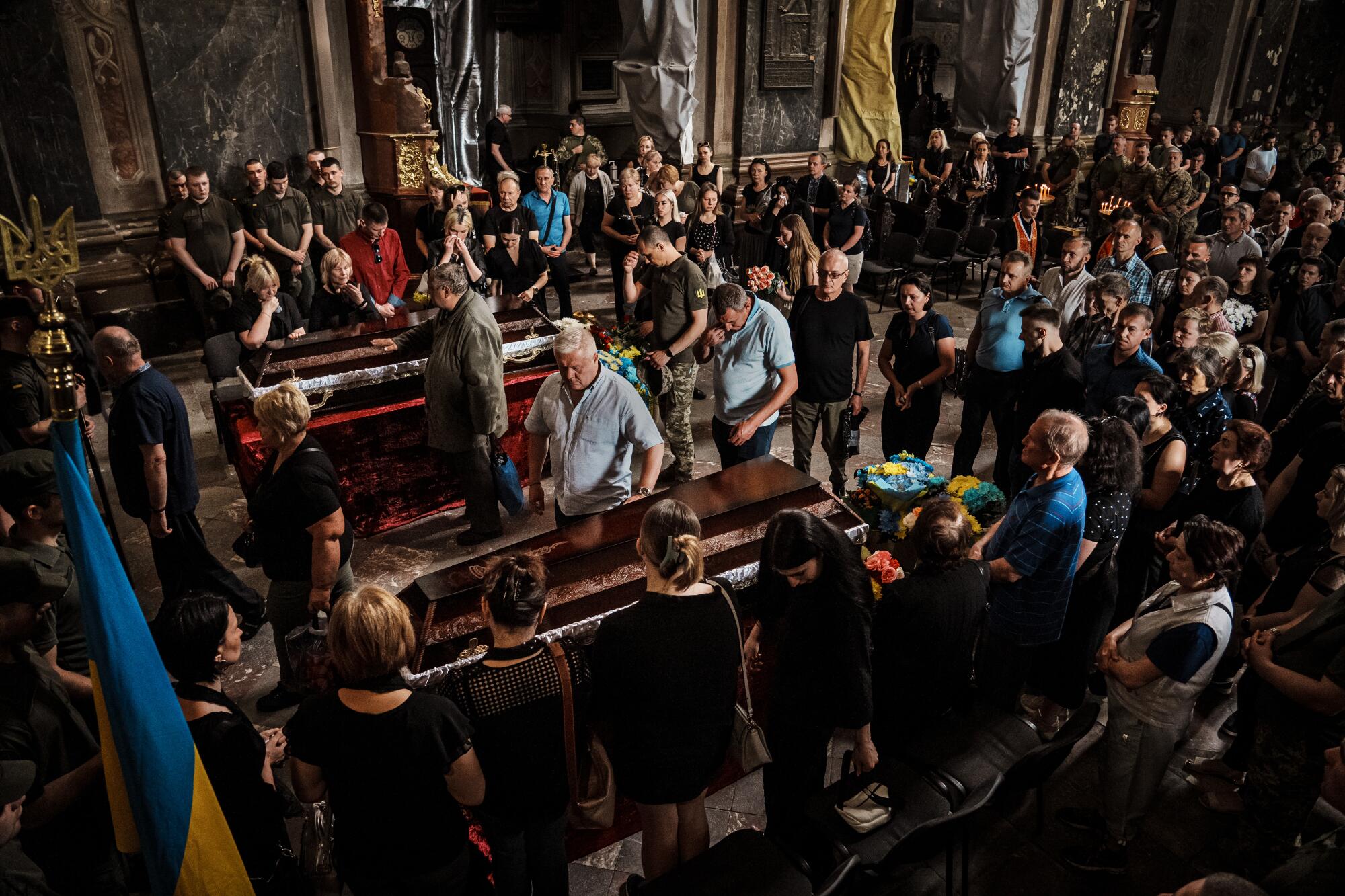
Even a city like Lviv, hundreds of miles from the front lines, reaps a full measure of war dead, because units from here are often deployed in the country’s south and east, where the heaviest fighting is taking place.
The remains of soldiers killed in distant battles may take days, weeks or even months to be returned home. Some maimed corpses must be identified through DNA testing. Fighting in remote or fiercely contested areas results in transportation delays.
Body swaps are periodically conducted to recover remains of those who fell in territory that was subsequently captured. One of the newly buried in Lviv, a colonel in the border guard, died more than a year ago in the eastern port city of Mariupol, which fell to Russia three months after the full-scale invasion began.
The prospect of a nuclear-armed superpower falling into disarray terrified neighboring countries throughout Europe and put the White House on alert.
The dead of the current war lie mainly outside the walls of Lychakiv’s main enclosure, in a sloping area dubbed the Field of Mars, now a sea of fluttering flags and raised-earth mounds enclosed by wooden partitions. Since April of last year, rows of new graves have crept up the hillside, more than 417 in all.
As the space inexorably fills, archaeological surveys are being conducted to identify and move some older remains, city officials said. Some graves are those of Russian soldiers; the provenance of others, thought to date back to World War I or earlier, is unknown. A 1970s monument to Soviet soldiers was dismantled in 2021, four months before the Russian invasion.
Eventually, the entire area will become a new memorial to Ukraine’s fallen, but the design cannot be finalized until after the war ends, said Lviv’s chief architect, Anton Kolomieitsev. For one thing, the dimensions of the still-growing burial ground are not yet known.
“I never could have imagined such a number,” Kolomieitsev said.
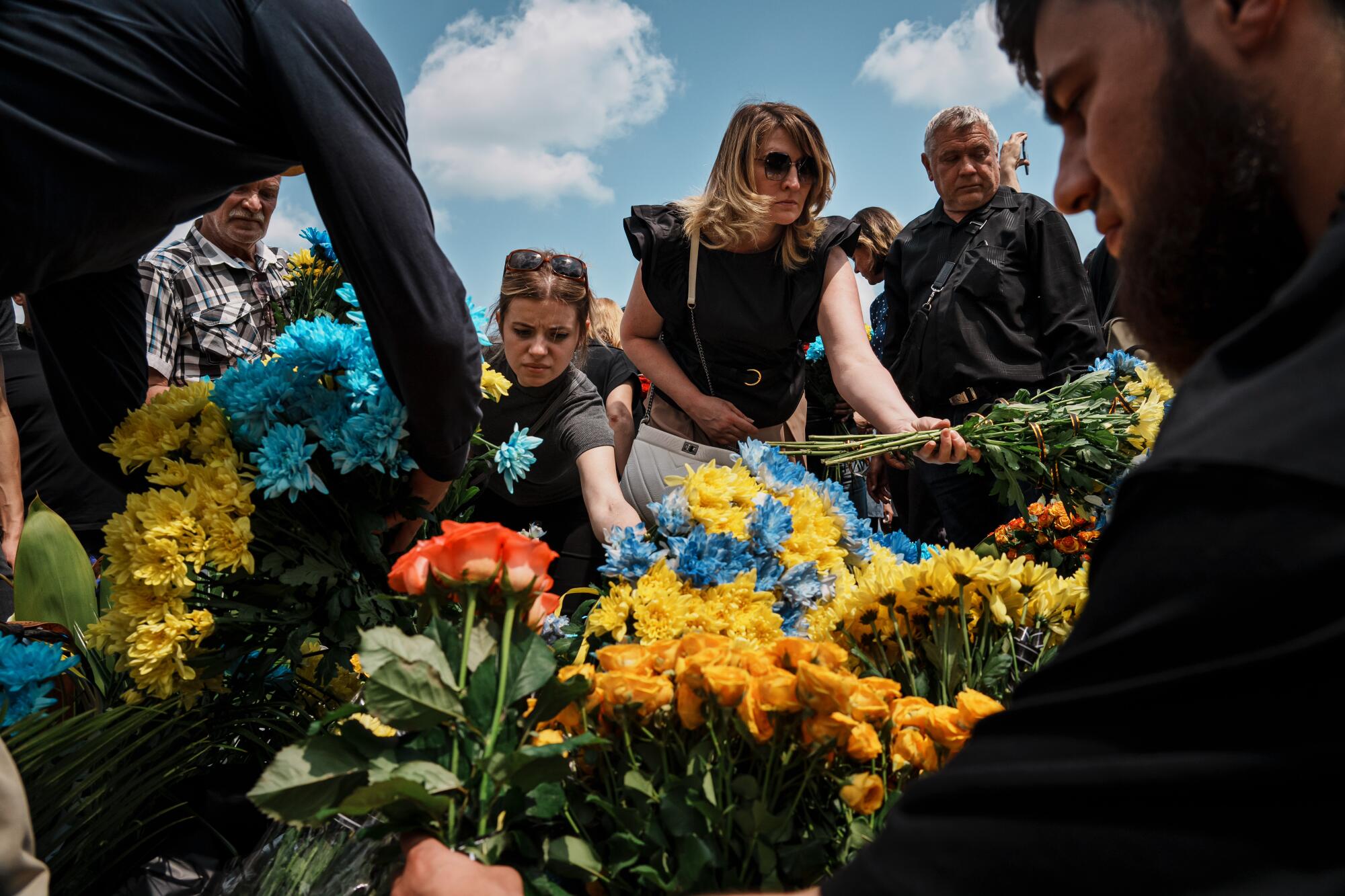
::
It’s been nine months now, and some friends and relatives have begun telling Anna Yunik, as gently as they can, that perhaps she shouldn’t visit the grave of her husband, Yaroslav, every day. But she tells them she can’t stay away.
“Coming here — I need it,” said Yunik, 35. “I feel good here. It’s calm. I can be with him.”
Yaroslav Yunik, 36, was killed during a lightning Ukrainian offensive last September in the northeastern province of Kharkiv, one of the largest territorial recaptures of the war. Members of his unit told his widow that he died saving a comrade.
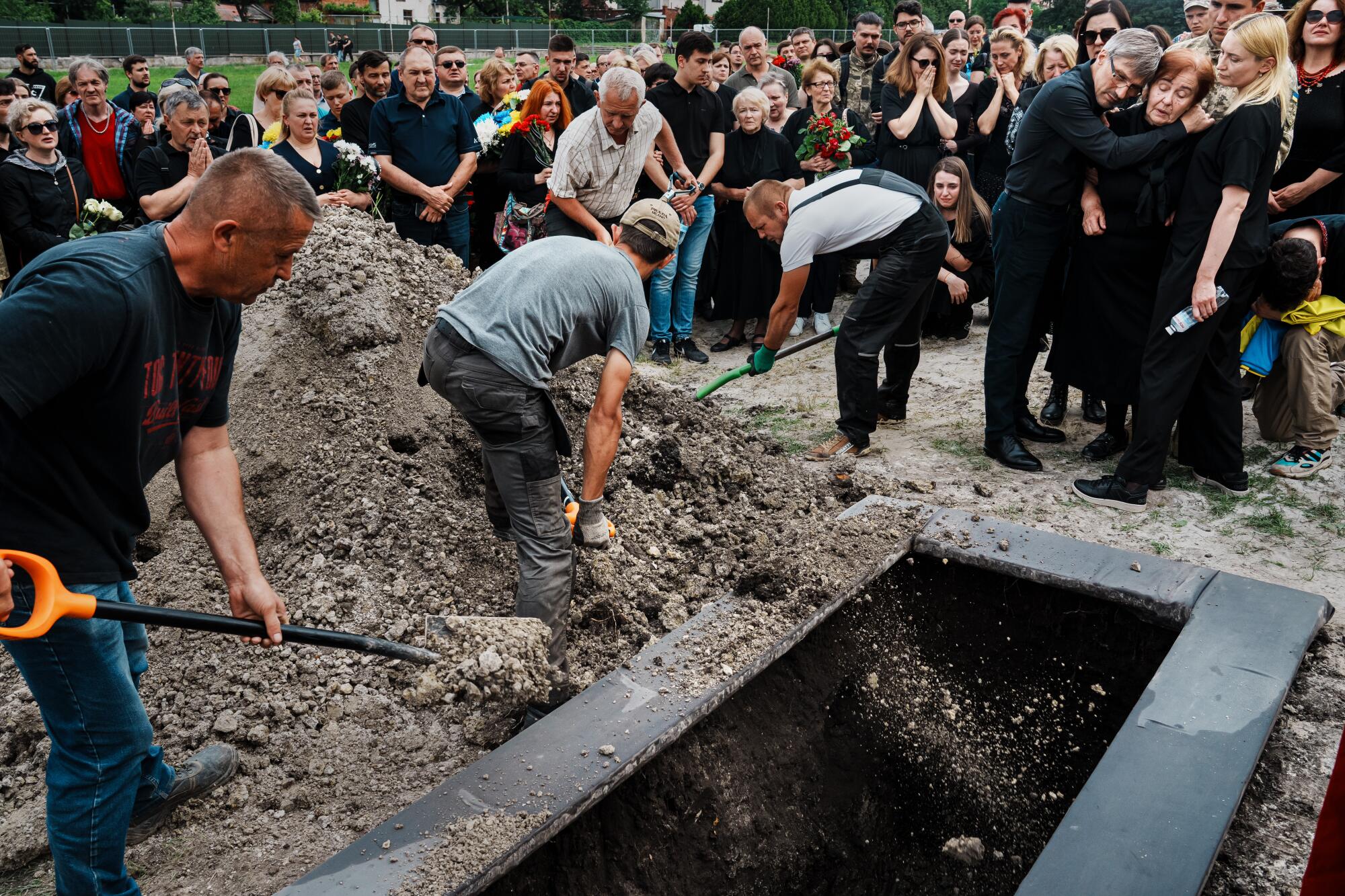
Because so many people come here so frequently, the cemetery has become a gathering place of sorts, a wellspring of communal and individual grief. Mourners often get to know one another, first as nodding acquaintances and then friends, Yunik said.
“We have become a family,” she said. “We understand each other.”
In the quiet morning and evening hours, people sit on benches between the rows with a coffee or a cola or a cigarette, occasionally placing a refreshment on the grave as if they and a dead loved one could enjoy it together.
Almost every grave is a small, carefully tended garden, the raised soil bed blooming with flowers and dotted with candle lanterns. A portrait and a Ukrainian flag adorn each, together with other banners — regimental colors, or emblems of the local soccer club.
The few graves left unattended are painstakingly looked after by others. If the relatives of a service member being buried are IDPs — internally displaced people — strangers will make a point of turning up for the funeral.
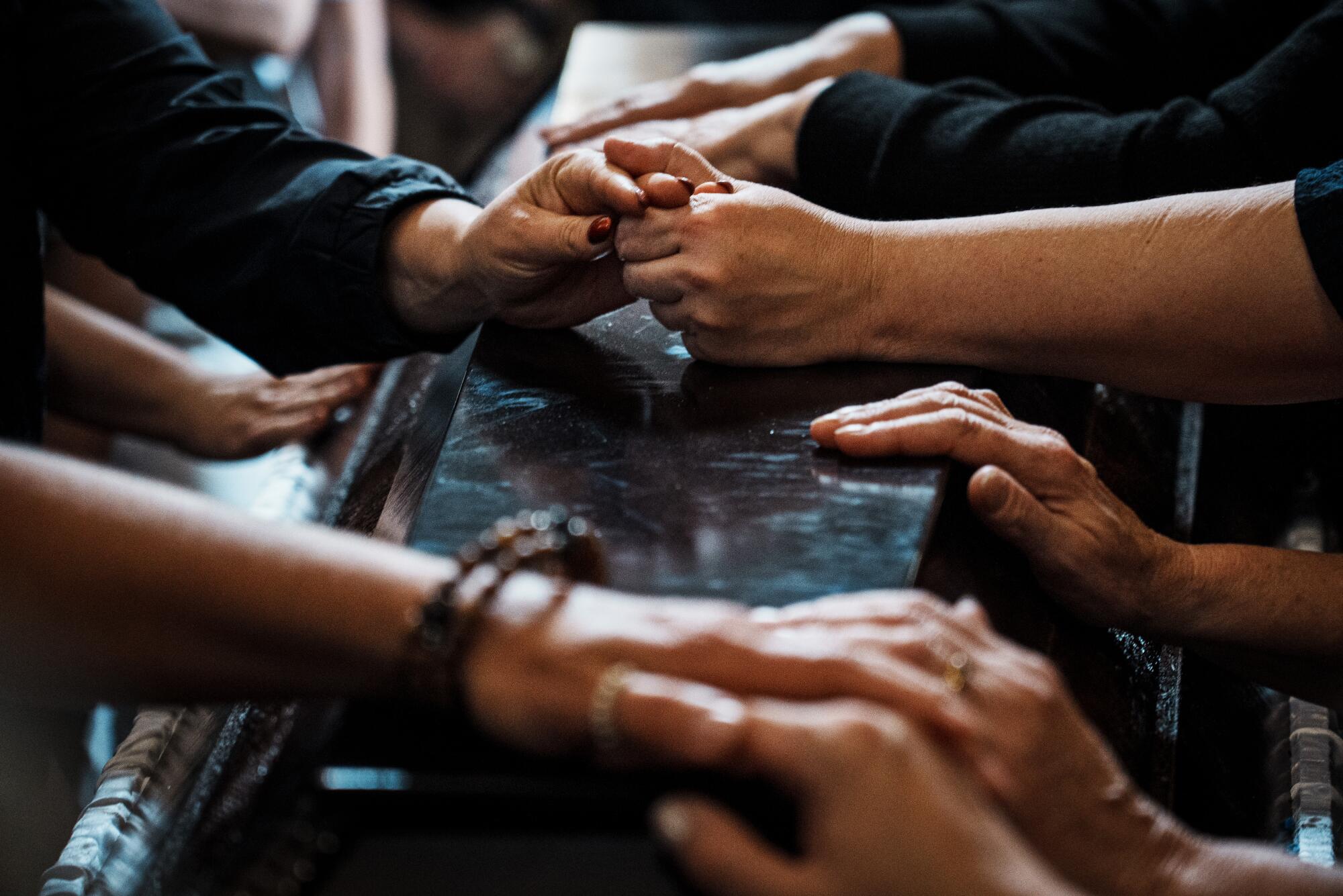
Next month would have marked the Yuniks’ 10th wedding anniversary. Anna and Yaroslav were schoolmates, “in love when we were 13,” she said, smiling at the memory.
As Anna stood over her husband’s grave, another cortege arrived at the cemetery. She turned to face the assembly below, bowing her head as a lone trumpeter played.
When the traditional gun salute rang out, she flinched. And when the procession passed by, heading toward the newly dug graves uphill, she, like other onlookers, dropped to one knee.
::
Clouds of incense, guttering candles: Inside Lviv’s garrison church, singer Vasyl Hnypyuk’s high baritone rose and fell in cadence, supplementing the chanting of presiding priests.
Before the war, the 31-year-old music-academy graduate was a choir director, but as military funerals became commonplace, the bishop of Lviv asked him for help. “Now I know it by heart,” he said of the Greek Catholic liturgy.
By his reckoning, Hnypyuk has sung at about 300 funerals, including those of a friend and an older mentor. Because of sheer numbers involved, some services are held jointly.
Last Tuesday, three funerals were held at once for three men killed days apart in the country’s east. A fourth was held later in the day.
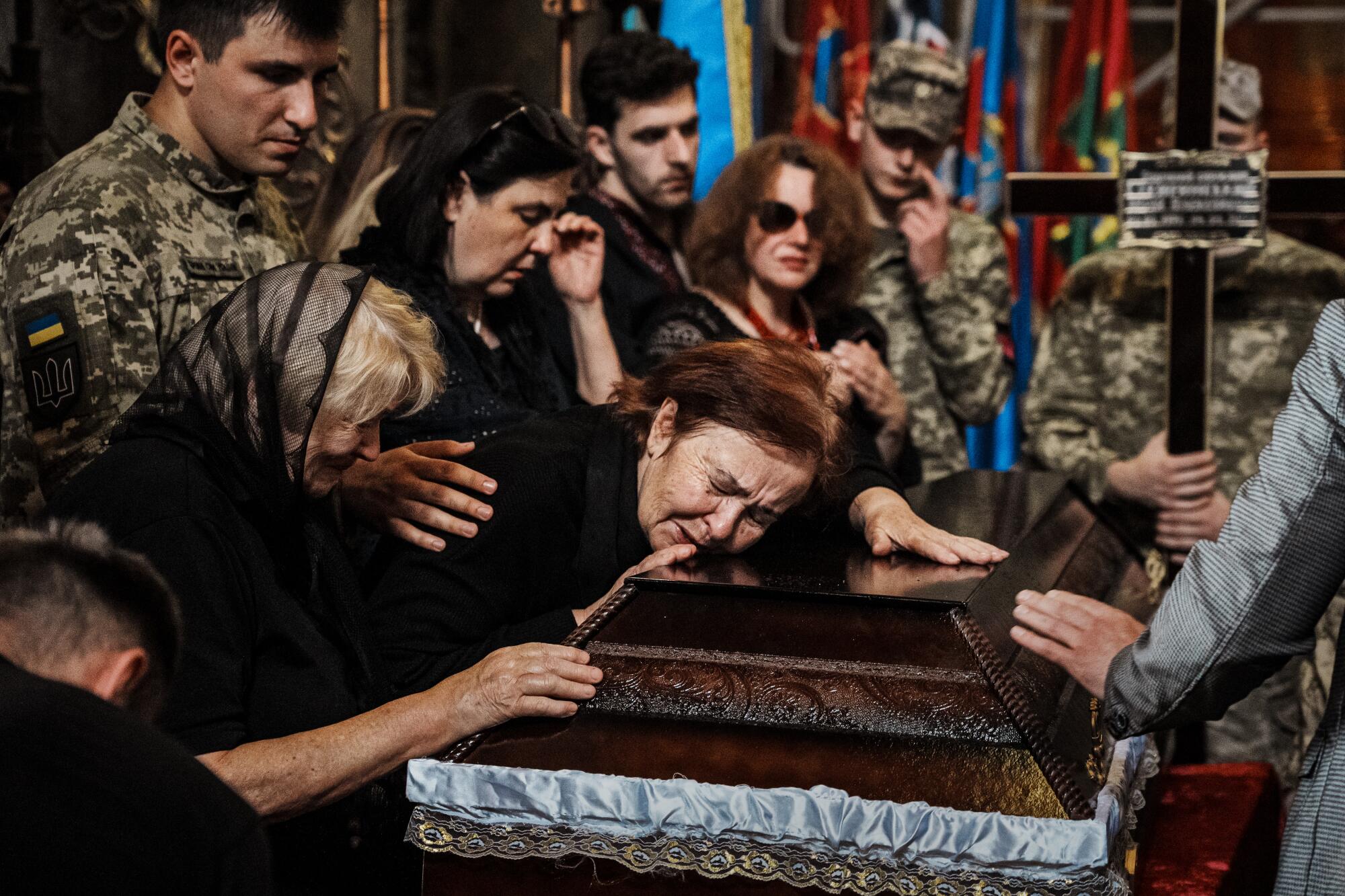
Alongside the casket of Yuriy Sikyrynsky — a territorial defense volunteer who at 52 was the oldest of the trio being mourned — his 78-year-old mother, Uliana, was nearly prostrate with grief, bending down again and again to rest her face against the polished wood.
In a side aisle along the church nave, one young woman let out a single wrenching full-body sob, then squared her shoulders and composed herself.
Close kin and acquaintances, passersby and comrades in arms, city officials and student cadets fill the church for nearly every such service. People come in dressed in jeans and business suits, in the rough attire of construction workers, in frilly dresses or combat fatigues.
Like Ukraine, its eastern neighbor and fellow former Soviet republic, Moldova is struggling to keep from being turned into a puppet of Russia once more.
Kyzyk, one of the 15 chaplains attached to the garrison church, knew that for the families of the dead servicemen, this day was the beginning of a long road. Military chaplains typically embark on months of work with the bereaved, offering comfort and counseling for adults and children.
“Each of these funerals represents a family left maimed,” Kyzyk said. “We try to watch over them.”
It is a long-term project.
“At first they are in a state of rejection and denial,” he said. “Then they might become depressed, or have a crisis. A few times a week, we try to get them together.”
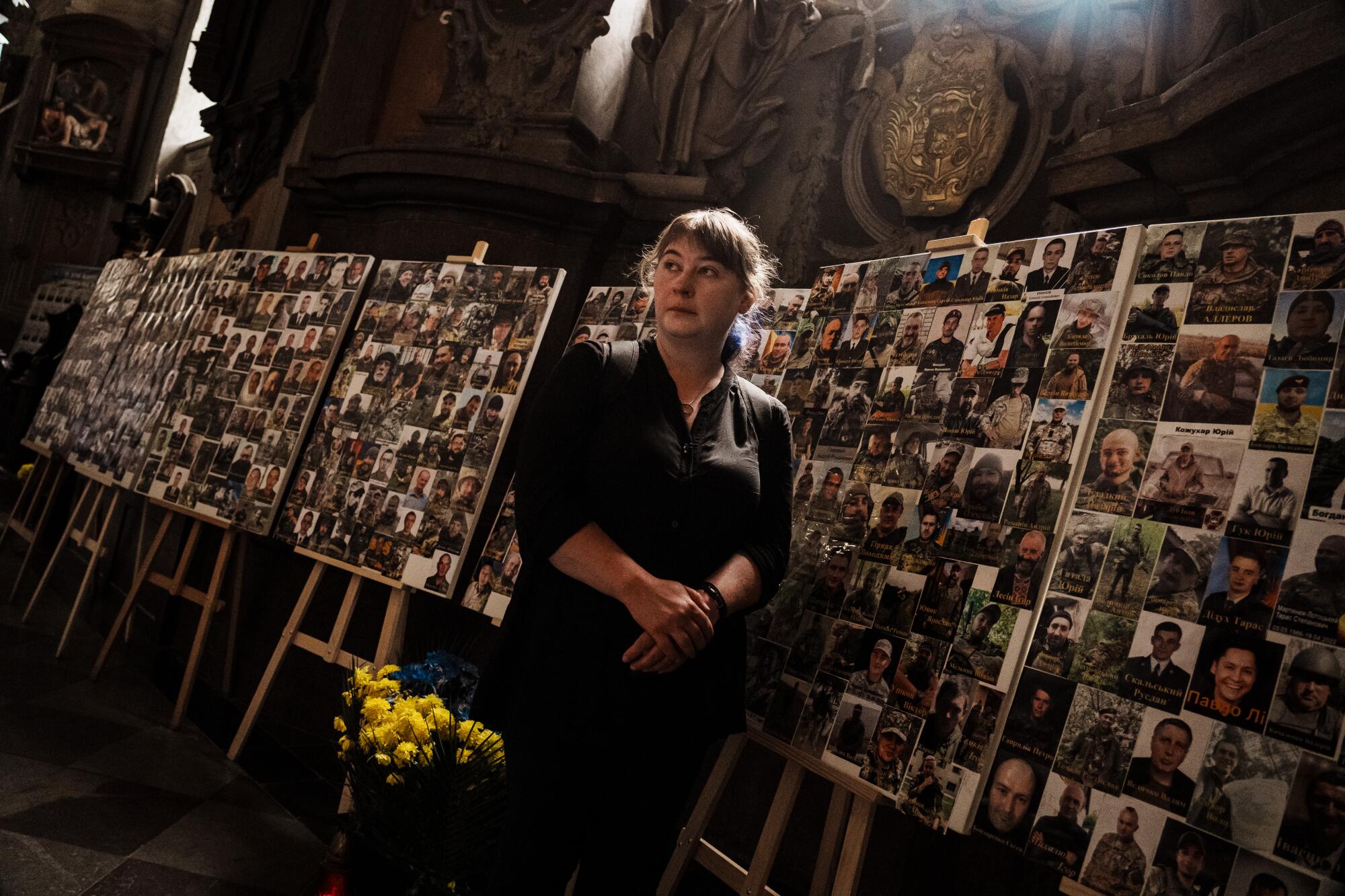
After the midday church funerals ended, mourners again headed to Lychakiv, to the Field of Mars, for final prayers before the coffins were lowered into the earth. Muffled sobs carried on a sudden slight breeze.
Singer Hnypyuk looked on from the sidelines as the knots of mourners lingered. The humid air pressed close, threatening rain that never came.
“There are so many tears,” he said. “I’m tired — we’re all so tired — but everyone has to do what they can.”
Just up the hill, another new grave awaited.
More to Read
Sign up for Essential California
The most important California stories and recommendations in your inbox every morning.
You may occasionally receive promotional content from the Los Angeles Times.
